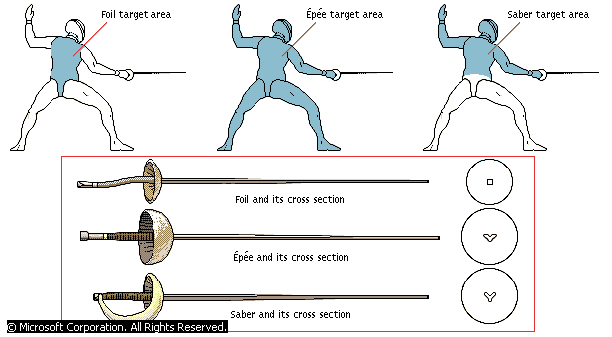
FOIL,
ÉPÉE, AND SABER
Three weapons are
used in the modern sport of fencing: foil, épée, and saber. The blades of
these weapons are made of tempered steel, and each has a maximum blade length of
about 89 cm (35 in); the maximum weight of foil and saber is about 500 g (about
17.6 oz), that of épée about 770 g (about 27.2 oz). Developed originally as a
practice and sporting weapon, the foil is light and flexible and is considered
the basic weapon. Its use is generally taught to all beginning fencers. Touches
are scored by thrusting with the blunted point; the blade is rectangular in
cross section. The modern épée is descended from the French small sword. Like
the foil it is a thrusting weapon, but has a larger bell, or hand guard, and is
heavier and more rigid in construction.
Handles, or grips,
for foil and épée vary and are chosen according to individual preference. They
include the French grip, slightly curved and with a pommel at the end; the
Italian grip, which has a crossbar and is used with a wrist strap; and various
pronged handles gripped much like a pistol.
The modern saber is derived from the weapon formerly used by cavalrymen. It has a protective, scoop-shaped hand guard that curves under the hand and, like the épée, a blade roughly triangular in cross section. Touches are scored by thrusting with the weapon or, chiefly, by cutting in a slashing motion with the edge of the blade.
